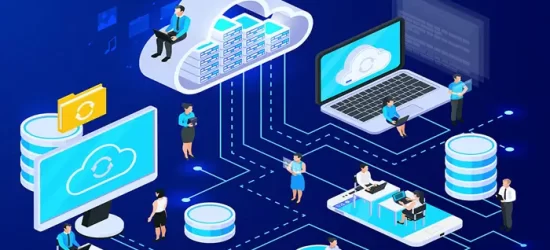It’s Time to Think of Remote Infrastructure Management!

Today, the complex IT environment is meant for several difficult situations: multiple threats, frequent network outages, security breaches, critical assets that go down repeatedly, and large volumes of unorganized data; this kind of situation necessitates 24/7 monitoring of the infrastructure by an IT department. In this scenario, Remote Infrastructure Management seems to be very option to consider.
What is Remote Infrastructure Management?
Remote Infrastructure Management is the process that manages the IT infrastructure for the organization entirely or from a remote location. It all happens in the entire physical infrastructure, which is geographical to the IT services from the management. Most prominent organizations operate across the geographies, with the various functional areas functioning from the different locations. IT infrastructure forms the base of those operations scattered across the landscapes to support the other functional areas. Remote infrastructure management helps manage the central IT infrastructure with greater coordination and ease of reparability and maintenance. Most organizations outsource the entire RIM process for the other IT service that provides experience and expertise in managing the IT infrastructure.
Benefits of Outsourcing the IT Infrastructure:
One of the easiest ways to optimize the IT functioning even further on outsourcing the TIM process is specialized service providers. It brings all the expertise and experience to the organization. It means focusing on the business goals and strategies, which allows them to focus on maintaining the IT systems. This helps reduce the IT budget because it is single, a central setup responsible for the entire IT infrastructure that instead of the numerous one who cost to add up simply.
Advantages of Remote Infrastructure Management for the Business:
Proactive Monitoring:
Monitoring 24/7 by the RIM support, which keeps the desk a check on the infrastructure (that is, critical services and assets), searches for the potential problem alerts and areas for the company to the chances of a breakdown, as an additional pair of hands that resolves the issues from a remote location.
Improved up-time:
Remote infrastructure management provides the latest tools and great technologies that ensure all the critical IT assets that remain the optimum health. Corrective maintenance, proactive that help to prevent costly downtime.
High Security:
The support of the RIM provider fulfills all the high-security requirements for the organization. Data communication is usually encrypted to carry out the secured data transfer. The data is sorted in the encrypted format, which eliminates any data loss. It specialized in security experts who also monitor your deployment and firewall, patch, and manage to keep your business protected.
Remote Service Desk:
For the company’s IT users, the RIM support provider is contracted to provide incident management support.
It enhances the efficiency and productivity of the IT infrastructure.
It improved the service business-critical of availability.
It measures the quality of service through the well-defined.
It skips day-to-day focus and operation on innovation.
It increases the capacity and flexibility for future business needs.
On business demands which are access to skilled resources to the ramp-up or ramp-down.
It resultant in increasing the application availability.
It improves business user satisfaction.
To conclude, the remote infrastructure management services result in significant improvement and support expanding the business. It is to be done carefully and with the vendor that has been a better track record.